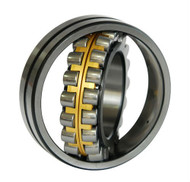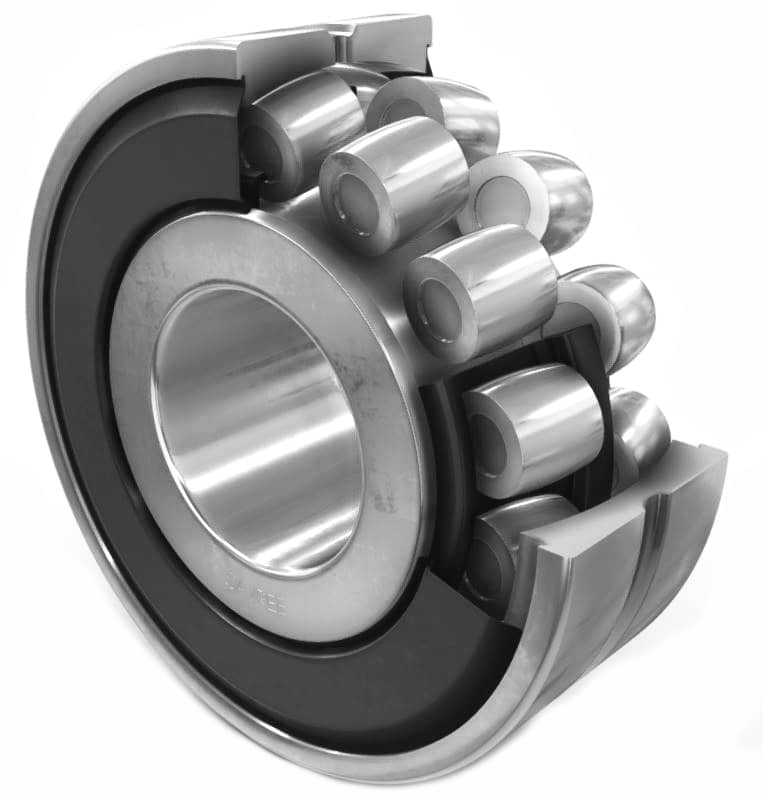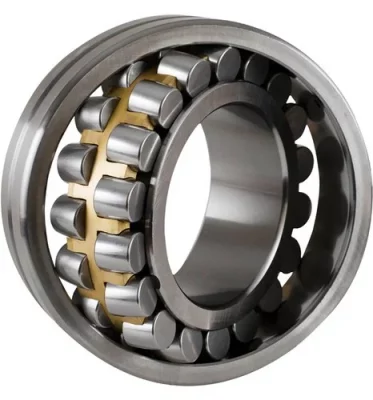Can you explain the differences between straight bore and tapered bore spherical roller bearings?
Straight bore and tapered bore spherical roller bearings differ in their inner ring bore design and their applications:
Straight Bore Spherical Roller Bearings:
– These bearings have a cylindrical inner ring bore. They are designed for applications with little to no misalignment and where mounting and dismounting are relatively straightforward.
– Common applications include conveyor systems, industrial gearboxes, and machines with precise alignment requirements.
– Straight bore bearings are typically mounted directly on a shaft without the need for an adapter sleeve.
Tapered Bore Spherical Roller Bearings:
– These bearings have a tapered inner ring bore with a conical shape. They are designed to accommodate misalignment and are often used in more demanding applications.
– Tapered bore bearings are suitable for applications where the shaft or housing may be misaligned during operation.
– To mount a tapered bore bearing, an adapter sleeve or withdrawal sleeve is used to secure it to the shaft.
– Tapered bore bearings are commonly found in industries such as mining, construction, and heavy machinery where misalignment and heavy loads are prevalent.
Choosing between straight bore and tapered bore spherical roller bearings depends on the specific requirements of the application, including misalignment tolerance and ease of mounting.
What are the signs of wear or damage in spherical roller bearings, and when should they be replaced?
Spherical roller bearings may exhibit several signs of wear or damage that indicate the need for replacement:
- Abnormal Noise: Unusual clicking, grinding, or rumbling sounds during operation can be a sign of bearing damage.
- Increased Vibration: Excessive vibration in the equipment may suggest bearing issues, especially if it’s a new development.
- Overheating: Elevated operating temperatures can be a sign of increased friction due to bearing wear or insufficient lubrication.
- Reduced Performance: If the equipment’s performance drops significantly, it could be due to bearing wear affecting the smooth rotation of components.
- Visible Damage: Inspect the bearing for visible signs of damage, including corrosion, pitting, scoring, or cracks.
- Lubrication Issues: If the bearing lacks proper lubrication or if there are signs of contamination in the lubricant, it can lead to bearing wear.
- Irregular Movement: Uneven or rough movement of the equipment can be due to bearing problems.
When these signs are detected, it’s advisable to replace spherical roller bearings promptly. Delaying replacement can lead to further damage, reduced equipment efficiency, and potential safety risks. Regular maintenance and monitoring are essential to identify wear or damage early and ensure the continued reliable operation of the machinery.
What are spherical roller bearings and how are they used in various industrial applications?
Spherical roller bearings are a type of rolling-element bearing designed to accommodate high radial and axial loads in both directions. They feature two rows of barrel-shaped rollers and a common sphered outer ring raceway, which allows for misalignment compensation and reduced friction. Spherical roller bearings find application in various industrial sectors:
- Heavy Machinery: Spherical roller bearings are commonly used in heavy machinery, such as crushers, mining equipment, and construction machinery, where they provide support for high radial loads and misalignment.
- Material Handling: Conveyor systems, bucket elevators, and other material handling equipment use spherical roller bearings to withstand the demands of continuous operation.
- Paper and Pulp Industry: The paper manufacturing industry employs these bearings in machines like rollers, dryers, and calendars to handle high loads and challenging conditions.
- Steel Industry: Spherical roller bearings are essential in steel mills, where they help support heavy rollers, guide systems, and the entire production process.
- Railways: Railway applications, including locomotives, freight cars, and passenger cars, benefit from the robustness and load-carrying capacity of spherical roller bearings.
- Wind Energy: Wind turbines rely on spherical roller bearings for the main shaft and gearbox to manage both radial and axial loads under varying wind conditions.
- Oil and Gas: Exploration and drilling equipment, as well as refining machinery, use these bearings due to their capacity to handle extreme conditions.
- Pumps and Compressors: Spherical roller bearings support the rotating elements in pumps, compressors, and blowers, ensuring efficiency and reliability.
- Marine Industry: Ships and offshore platforms use these bearings in propulsion systems, cranes, and winches to handle heavy loads and vibrations.
Spherical roller bearings are crucial in applications demanding high load-carrying capabilities, misalignment compensation, and resistance to harsh environmental factors, making them versatile components across various industries.
editor by CX 2024-05-16




